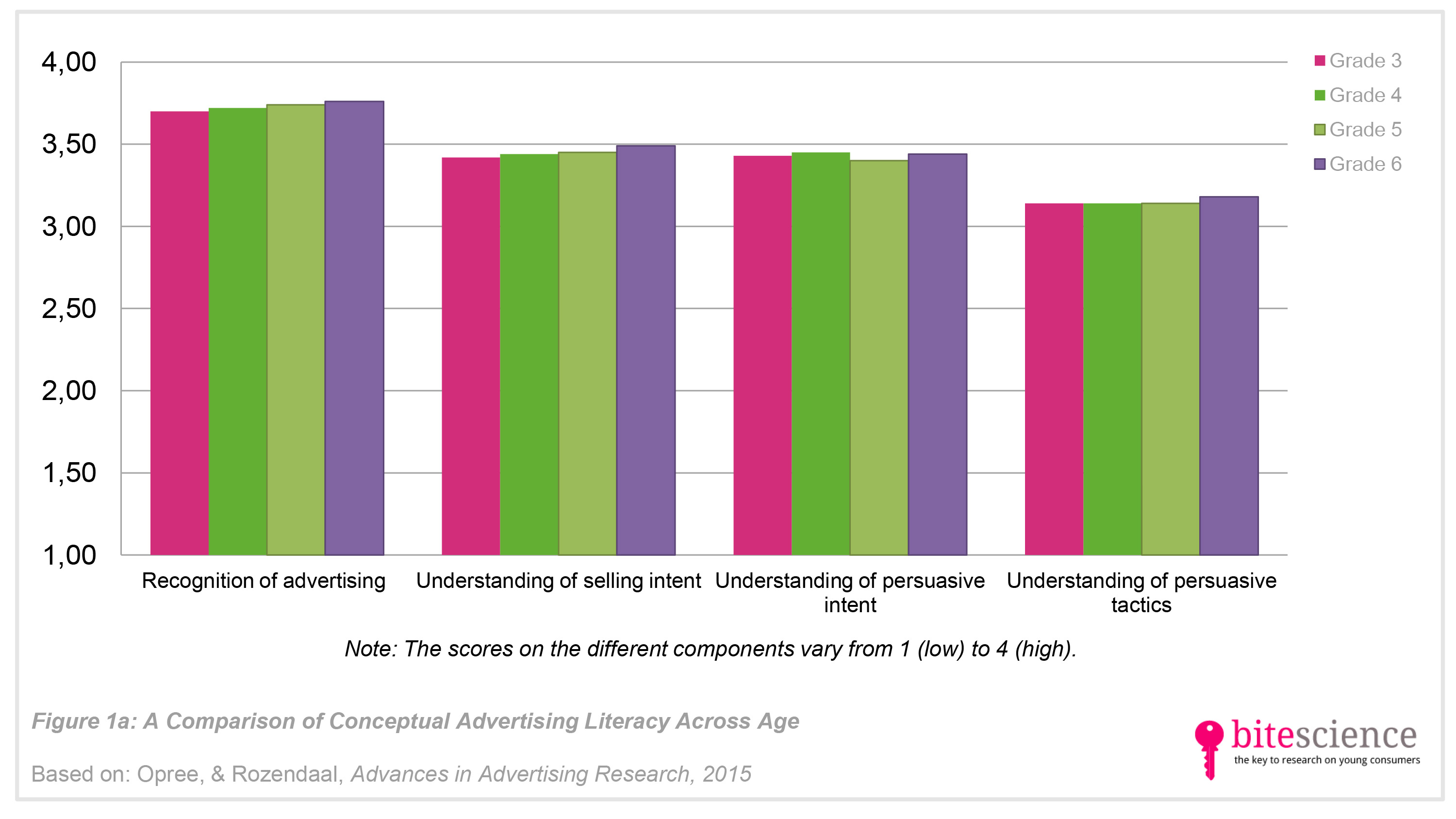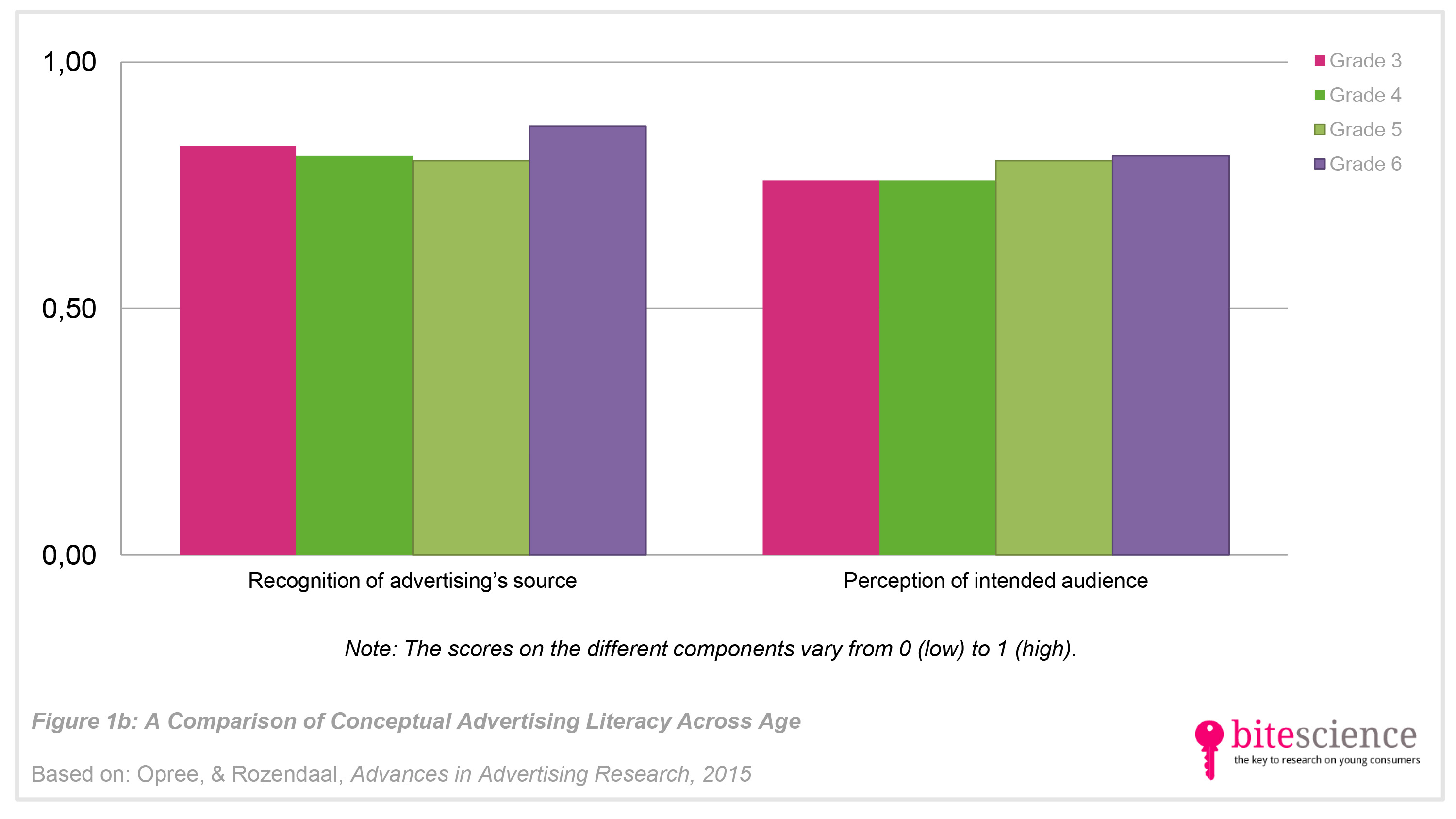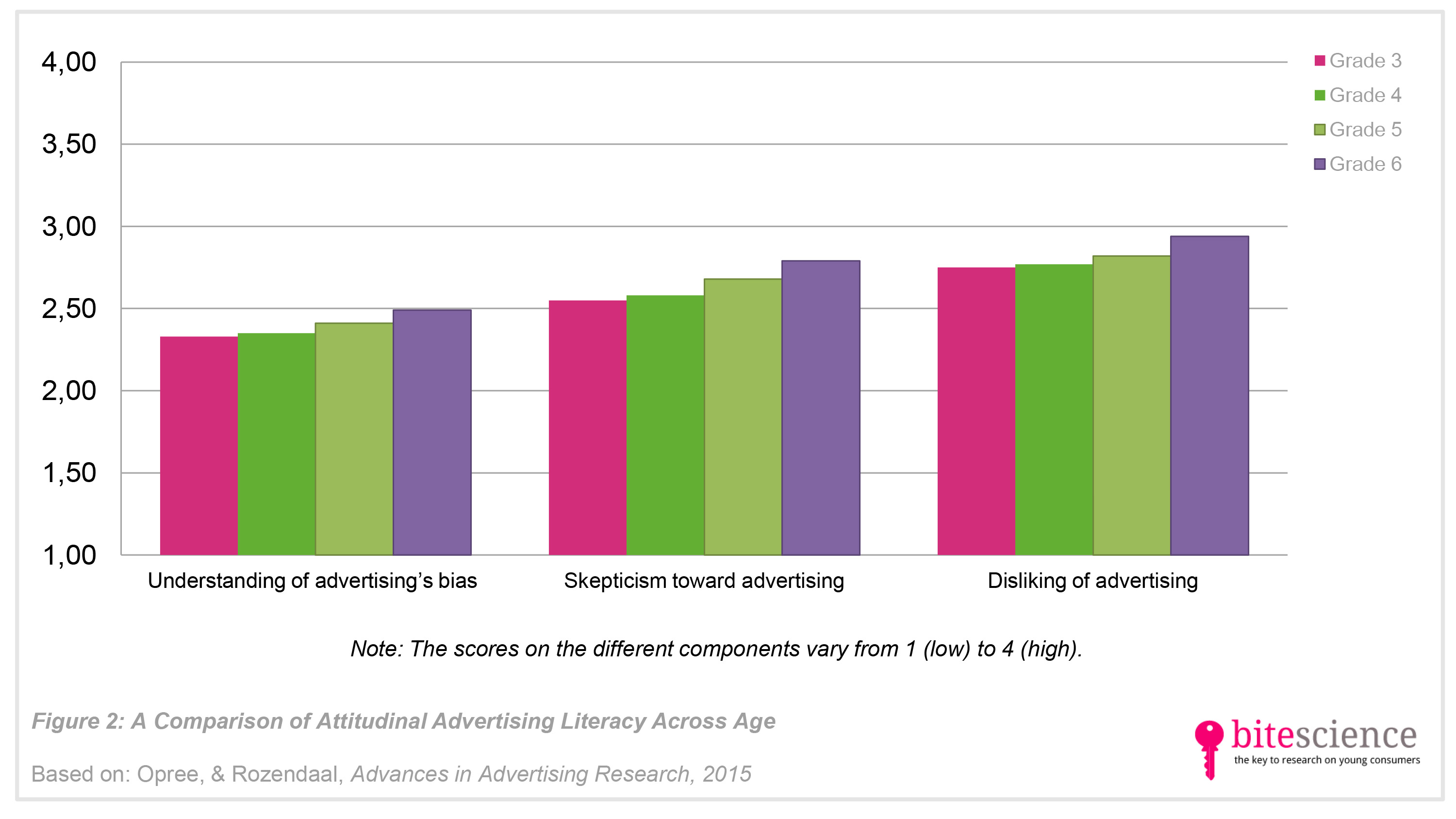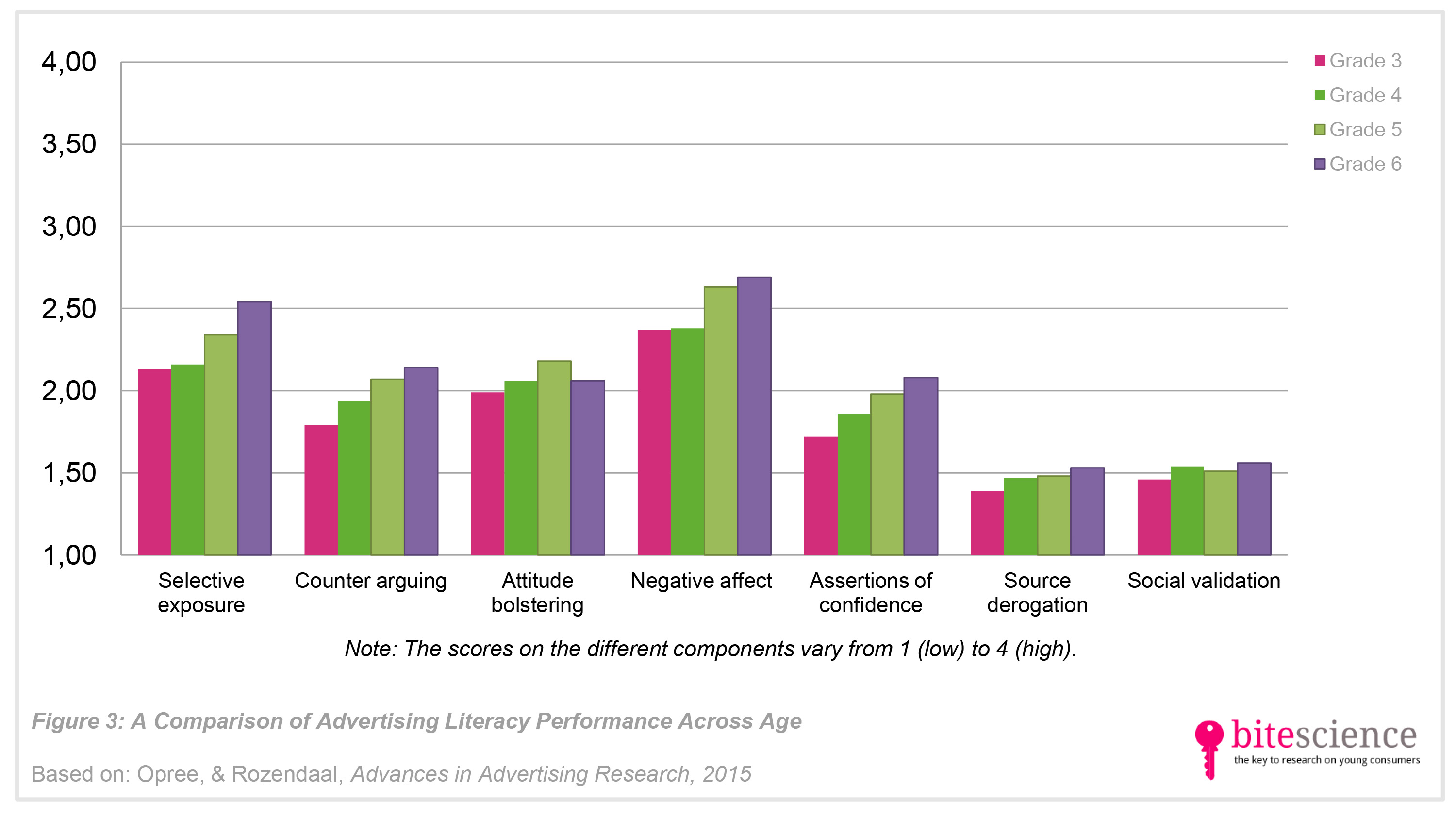
Critical Children Are More Resistant To Advertising
A study in Advances in Advertising Research shows that children (8-12 y/o) have relatively high levels of advertising literacy: they are able to understand and recognize advertising, and they are fairly critical toward it. It turns out that especially those critical feelings toward advertising are important for children’s actual resistance toward advertising. Moreover, results show that advertising literacy progresses with age.
Take aways
- Children’s (8-12 y/o) recognition and understanding of advertising and their critical advertising attitudes progress with age, with the steepest increase between 10 and 12 years.
- Despite the fact that children are fairly able to recognize and understand TV-commercials, they are not more resistant toward it.
- In contrast, children with more critical attitudes toward advertising do show more resistance as they more often use resistance strategies when confronted with TV-commercials (e.g., paying no attention to the ad, rebutting ad claims).
- For policy makers with interest in children’s advertising defenses it’s important to know that educational advertising programs must focus on increasing children’s critical attitudes toward advertising in order to reduce their advertising susceptibility.
Study information
The question?
Does children’s level of advertising literacy progress with age, and to what extent does advertising literacy influence children’s resistance toward advertising?
Who?
785 8- to 12-year old children (mean age: 9 years old; 52% boys)
Where?
The Netherlands, Europe
How?
The children were recruited through an online youth panel managed by a large research company in the Netherlands. The survey included different advertising-related questions.
Three different levels of children’s advertising literacy were measured: (1) conceptual advertising literacy (i.e., children’s recognition of advertising, understanding of selling intent, recognition of advertising’s source, perception of intended audience, understanding of persuasive intent, and understanding of persuasive tactics), (2) attitudinal advertising literacy (i.e., children’s understanding of advertising’s bias, skepticism toward advertising, and disliking of advertising), and (3) advertising literacy performance (i.e., different resistance strategies: children’s selective exposure (paying no attention to advertisements), counter arguing (rebutting the arguments in advertisements), attitude bolstering (generating thoughts that are consistent with one’s own attitude), negative affect (getting irritated or angry), assertions of confidence (asserting that the advertisement could never change one’s opinion), source derogation (dismissing the validity of the source of the advertisement), and social validation (bringing to mind important others who share one’s original attitude)).
Facts and findings
- Conceptual advertising literacy increased with age: 11-12 year olds scored higher on overall conceptual literacy than 8-9 year olds (see Figure 1a & Figure1b for scores on all six conceptual ad literacy components).
- Attitudinal advertising literacy increased with age as well: 11-12 year olds scored higher on overall attitudinal advertising literacy than 8-10 year olds, and the 10-11 year olds scored higher than the 8-9 year olds (see Figure 2 for scores on all three attitudinal ad literacy components).
- Advertising literacy performance also increased with age: 11-12 year olds engaged in more resistance strategies when confronted with advertising than 8-10 year olds, and 10-11 year olds scored higher than 8-10 year olds (see Figure 3 for scores on all seven ad literacy performance components).
- Children’s overall level of conceptual advertising literacy was not associated with their advertising literacy performance.
- In contrast, children’s overall attitudinal advertising literacy was associated with their advertising literacy performance: those with greater understanding of advertising’s bias and greater skepticism toward or disliking of advertising engaged in resistance strategies more often when confronted with advertising.
- In sum, despite the fact that children’s overall level of conceptual advertising literacy was high, this was not enough to increase children’s resistance toward advertising. Only children’s critical attitudes toward advertising seemed beneficial for increases in resistance strategies.
- The two most often used resistance strategies were negative affect in which children got irritated or angry when confronted with advertising, and selective exposure in which children paid no attention to advertisements.
- Critical fact: This study does not allow for any conclusions about cause (i.e., attitudinal advertising literacy) and effect (i.e., advertising literacy performance). The results only show that children’s critical attitudes toward advertising are associated with higher engagement in resistance strategies when confronted with advertising and cannot say anything about what causes what.



